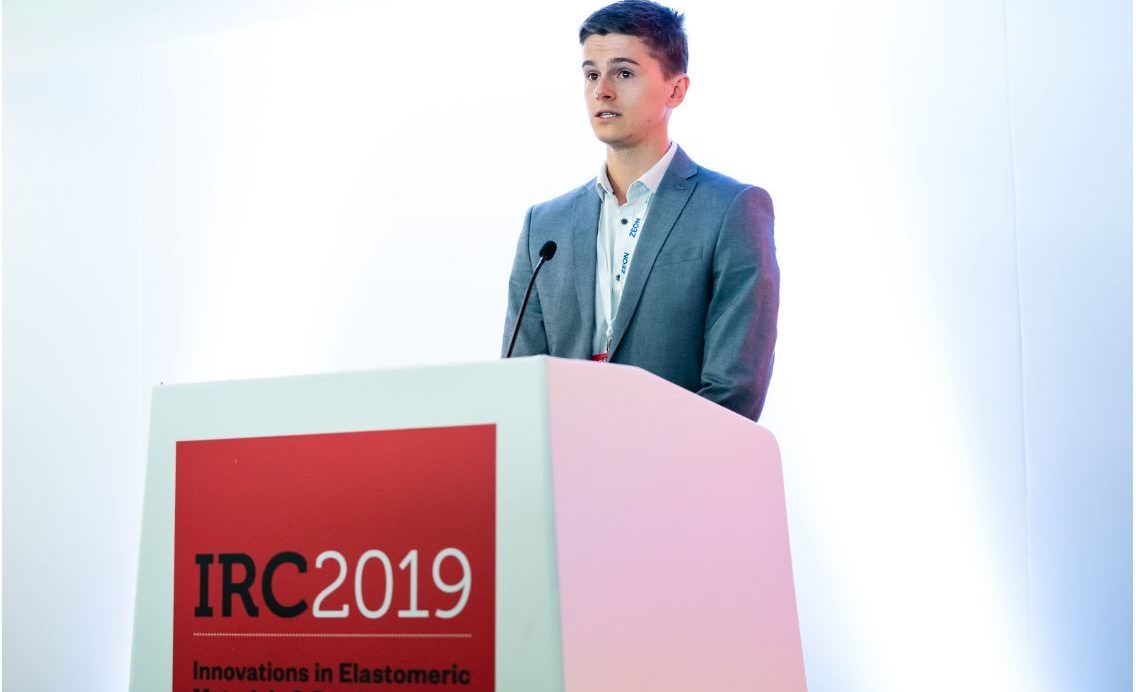Jamie Boden is a second-year PhD student at the CSCT. In September, he attended an international conference where he had to deliver a flash presentation about his research to a few hundred people. Things were not as smooth as they could have been, but Jamie never fails to find the positive side of things. He returned ready to share some tips with us, so we can be prepared to tackle these same challenges if we ever have to face them.
I recently attended the 2019 International Rubber Conference at one of the most interesting venues in London: the Kia Oval, which besides being the grounds of Surrey Cricket Club, also happens to host conferences and other events. It was a fantastic event over three days and I learnt a lot about modelling of elastomers, crosslinking and developments in the analysis of rubber. As part of my attendance, I had the opportunity to present a poster and give a flash presentation about my work.
As you can probably imagine, Flash presentations get their name because they are very quick. The purpose of this format is to offer an overview of your work and capture your audience’s curiosity enough for them to come and chat with you during the poster sessions.
This presentation in particular had to be no longer than one minute. Of course, standing up in front of 400 people for a minute may seem a really long time. When it comes to explaining your own research, though, it feels like no time at all, and things can get more interesting.
So, as it turns out, my one-minute presentation didn’t go off quite as perfectly as planned. But that’s fine – the experience gave me plenty of inspiration for this post.

So, why are one-minute presentations so much harder than, say, five-minute presentations?
Firstly, content. You have to get a great deal of information across in a very short time, without rushing or causing ‘glaze-over eyes’. Conversely, you can’t provide too little information and finish early; otherwise, you struggle to hook the audience into coming and chatting to you after. This is a really fine line to tread in all presentations. But when you only have one minute, the margin of error is a lot smaller.
Secondly, correcting mistakes or missing information. There’s simply no time to go back and correct mistakes or go over something you have forgotten to say. And in the rush of having to fit it everything in, this can happen all too often.

The good news is, the way to avoid the above issues is simple: practise, practise and then practise a bit more still. “Practice makes perfect” is a line everyone will have heard many times over, but it really does matter in a one-minute presentation. There isn’t enough time to improvise and hope to cover all the information, so repetition can really help. At the expense of sounding robotic, running through your presentation two to three more times than you usually do will firm up the timing and ensure you don’t miss anything.
Finally, bonding with your audience. First impressions are crucial. In longer presentations, you may get to sway your audience’s opinion one way or another. In 60 seconds, a first impression is pretty much the only kind of impression you’ll get to make. So make sure it’s a good one!
But how? Take a few seconds to calm yourself down before you present. Some people use power poses, others deep breaths; whatever works for you. Smile, breathe, then start. It will make you less rushed, and a simple smile is a good way to start your relationship with the audience on a positive footing.

As a final thought – make sure you are as informed as you can be about logistics. Is the presenter going to introduce you and your presentation, or will you have to do this yourself? This can add or subtract 10 crucial seconds, so do take the time to find out!
Speaking is always a challenge, especially to big audiences at important conferences, so always remember to forgive yourself if you do screw up. It is, after all, a very important part of your learning process, so embrace it.
Good luck!
Thank you to ARTIS and the EPSRC for making the attendance to this conference possible.
Respond



